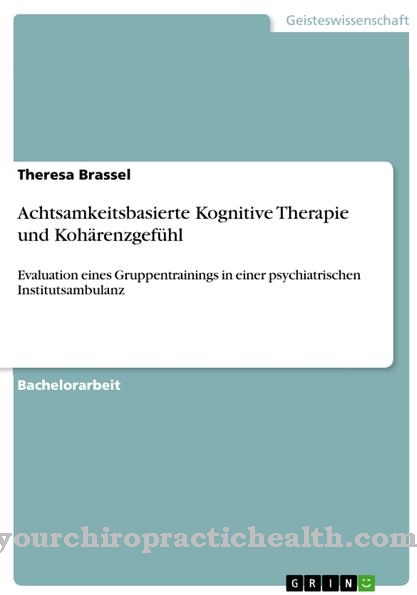The Bobath concept is particularly suitable for people who have motor disorders due to neurological diseases. This is a treatment option to alleviate existing symptoms. It can already be used in babies, but is also used in children and adults.
What is the Bobath Concept?

The Bobath concept is promoted by German health insurances and thus recognized. It is carried out according to the doctor's instructions. There is a collaboration between different medical actors. These include therapists in physiotherapy and occupational therapy, speech therapists, doctors and nursing staff.
It is used, for example, for cerebral movement disorders that were acquired in early childhood. It can also help with a delay in development, sensorimotor restrictions and other neurological and neuromuscular diseases. The concept itself is based on the theory of the reorganization ability of the human brain. This ascribes certain abilities to the brain.
Healthy regions should be able to learn the functions and tasks of diseased areas and thus take them over. Traumatic brain damage often results in discomfort in the communication pathways, while the control centers themselves are not affected. The training should create new paths.
Function, effect & goals
The Bobath concept aims to alleviate neurological disorders or restore certain functions by creating new connections. For this purpose, specific regions of the brain are regularly and consistently stimulated.
In this way it is possible for the body to be able to resume functions that have been lost due to a stroke, for example. To do this, other areas of the brain must be networked and intensified. By constantly practicing movements, contacts between synapses can be recruited. This is how functional associations build up within the neurons, which enable motor function. This makes the Bobath concept suitable for patients with motor movement disorders. Symptoms either have existed since birth or were acquired during life.
While the concept previously only applied to children, it was extended to adults in the 1960s. Nowadays, the Bobath concept is considered to be the most successful treatment method for patients with movement disorders due to neurological diseases. While people with brain damage used to be considered nursing care, rehabilitation can now not be ruled out. The concept is most often used in stroke patients who suffer from hemiplegia. The ultimate goal is to give the sick person back their independence and ability to act as much as possible. The patient's skills and abilities play an important role in this.
In addition to developmental neurology, knowledge of movement analysis, pedagogy and psychology also help. The individual environment of the sick person is carefully examined and possibly adapted to his needs. In this way, the specific action and movement goals should be realized. In addition to detailed advice, all aids such as crutches or wheelchairs can also be used. After a paralysis, the restrictions should not be compensated, but the movements should be regained. The active participation of the person concerned is a prerequisite for the reconstruction of independence.
The Bobath concept can possibly avoid long-term care needs or a stay in a home. The Bobath concept is a 24-hour concept. The brain is constantly picking up new information and is constantly learning. Accordingly, optimal learning opportunities are important. Thus, the concept is not limited to the therapy sessions, but is used in the entire everyday life of the patient. The correct positioning of the sick person favors an increase in muscle tone. At the same time, body awareness can be trained. All movements of the person concerned take place according to a certain technique.
This is used when it is a matter of independent movement or when a carer is moving the patient. Self-help training strengthens independence in everyday life.
You can find your medication here
➔ Medicines against tension and muscle painRisks, side effects & dangers
How successful the Bobath concept is depends on various factors. Thus, it cannot be guaranteed that the patient will regain his independence through the various measures. The brain damage that led to the motor restrictions in the first place cannot be treated with the concept.
Depending on the size and severity of the damage, the patient's ability to learn can be changed. The concept of learning ability describes the ability to restructure the nerve cells of the human brain. The ability to learn can be strongly influenced, especially when there is a repeated lack of oxygen. Furthermore, the neurological diseases often worsen the ability to learn. For the Bobath concept to be successful, the patient must be motivated. The drive, however, is often determined by the illness, the processing of the complaints and the brain damage itself. The relatives also play a role.
These can often motivate the person concerned or inhibit his drive. Accordingly, it is important that the patient's family is involved in the process at an early stage. The application of the concept takes place in the cooperation of different actors. If the actions are not coordinated with one another, a reduced success of the measures can also be determined. The Bobath concept therefore depends on many factors that the patient can only influence to a limited extent.
Furthermore, the measures are considered to be very expensive due to the time-consuming training of those involved. Some experts also criticize a lack of scientific knowledge and studies. Nevertheless, under positive conditions it is possible to improve the quality of life of the person affected. Some cases have proven that health can be restored through the Bobath Concept.













.jpg)

.jpg)
.jpg)











.jpg)